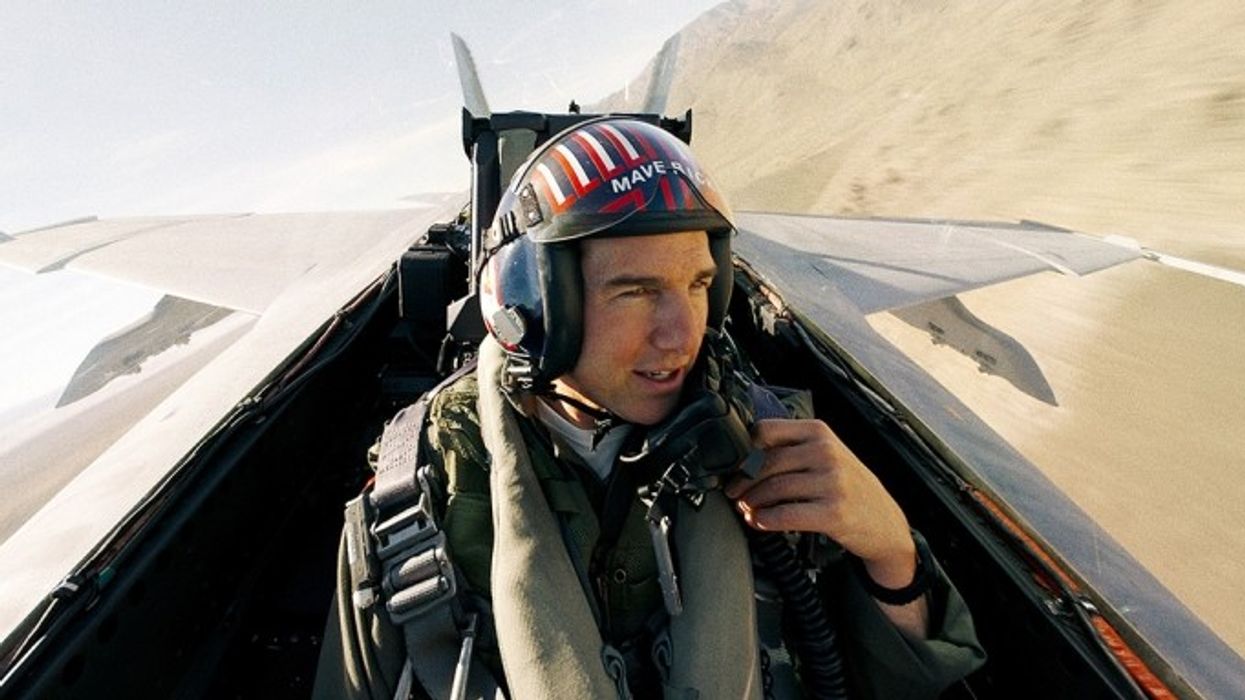How Did 'Top Gun: Maverick' Actually Shoot That Aerial Footage? With These Cameras and Lenses
It’s not every day that you see the boundaries of filmmaking pushed beyond what we thought was possible.

Not only is Top Gun: Maverick one hell of a good time, it is gorgeous to watch. Compared to the original film’s aerial shots, Maverick puts you into the characters’ perspective, giving you a sense of space with detailed views of what they see and experience in the sky. As a regular person without a pilot's license, these aerial shots are gorgeous and overwhelming to the senses. We are somewhere we’ve never been before.
This stunning footage is achieved due to the collaboration of DP Claudio Miranda, director Joseph Kosinski, and aerial coordinator and jetcam pilot Kevin LaRosa Jr. They harness the latest and greatest advances in digital-camera technology, optics, and support to push the boundaries of flight photography for film. American Cinematographer breaks down exactly how the filmmakers pull it off.
Developing the Aerial Cinematography
For Kosinski, bringing Top Gun’s visual language to life meant “developing the world’s most impactful aerial cinematography to date.”
The mission of Maverick was to capture as much as they could in-camera. The United States Naval Air Systems Commands (NAVAIR) provided the filmmakers with two Boeing F/A-18F Super Hornets fighter jets to modify for photography and a decommissioned Grumman F-14 Tomcat for the on-the-ground scene which was digitally re-skinned with the first film’s iconic jet design.
The film’s aerial coordinator and jetcam pilot, LaRosa, joined the production a few months before principal photography to help further develop Miranda’s and Kosinski’s approach to filming the aerial sequences.
LaRosa and his team assembled makeshift animatics by using iPhones and recorded stick-model airplanes to find the most exciting camera angles and maneuvers. “Then,” LaRosa says, “we’d go and test them with a real aircraft. We’d learn what worked and what didn’t.”
Setting Up the Cameras on the Aircraft
One of the filmmaking objectives was to capture the effects of the aircraft combat maneuvers on the actors’ faces, and the best way to do that was by finding a way to put as many cameras in the aircraft as possible.
Miranda proposed a six-camera setup for the F/A-18F. With three standard Sony VENICE units, with one outfitted with the Rialto system (which allows the camera’s sensor block and lens to be separated from the body while the connection is maintained via an extension cable) pointed back at the weapons systems officer’s seat, and two Rialtos looking forward over the pilot’s left and right shoulder.
The rear-facing VENICE cameras were mounted over the glare shield above the instrument console, and the rear-facing Rialto system was mounted on top of the aircraft’s light-control box in the rear. To ensure the rig's usability, NAVAIR subjected them to shock, vibration, and wind-tunnel testing.
With the light and compact Voigtländer Heliar wide-angle 10mm, 12mm, and 15mm E-mount primes, and the Zeiss Loxia 21mm, 25mm, 35mm, and 50mm E-mount primes, the cockpit cameras produced as slim a profile as possible since the lenses couldn’t extend past the glare shield of the aircraft.
For the exterior mounts, NAVAIR built custom exterior housing on the F/A-18s for the cameras. Up to four cameras could be mounted to the exterior at a time.

The Three Approaches to Capture Aerial Photography
LaRosa approached the filming of these high-speed maneuvers in three ways.
The first way was by using the CineJet. The modified Aero L-39 Albatros trainer jet with a six-axis gyrostabilized Shotover F1 camera platform mounted forward on the nose of the plane offered the operator a wide field of view from below and behind. The CineJet was used to capture high-action aerial dogfights and low-altitude precision maneuvering.
For overwater shots and longer flights, LaRosa used an Embraer Phenom 300 jet camera, which is a light private jet that is a bigger aircraft than the L-39, but faster and capable of longer flight times, outfitted with two Shotover F1 Rush platforms on the nose and under the tail. The operators flew both jets simultaneously while operating one of two VENICE cameras with either a FujiFilm/Fujinon Cabrio 20-120mm T3.5 or a Cabrio 85-300mm T2.9-4 zoom.

The final results are breathtaking, fresh, and push the limits of what aerial photography and cinematography will look like in film from here on. While there are many moments in Top Gun: Maverick that pay homage to the original, the filmmakers created a new look at the world we have adored for the past 36 years.
Learn more about the cinematography of Maverick at American Cinematographer.
What was your favorite flight sequence or shot from Top Gun: Maverick? Let us know in the comments!
Source: American Cinematographer

 Richard Gere and Uma Thurman in 'Oh, Canada' via Kino Lorber
Richard Gere and Uma Thurman in 'Oh, Canada' via Kino Lorber  Uma Thurman in 'Oh, Canada'via Kino Lorber
Uma Thurman in 'Oh, Canada'via Kino Lorber 









